Volume 189
Back to Newsletter List
Award
The paper by Dr. Etsuko Itou and others has been selected as "Editors' Choice" of Progress of Theoretical and Experimental Physics
2022-03-09
The Physical Society of Japan has announced that the paper entitled "Negative string tension of a higher-charge Schwinger model via digital quantum simulation" by Dr. Etsuko Itou (Postdoctoral Researcher, iTHEMS) and her collaborators has been selected as the Editors' Choice in Progress of Theoretical and Experimental Physics.
Reference
- Masazumi Honda, Etsuko Itou, Yuta Kikuchi, Yuya Tanizaki, Negative string tension of a higher-charge Schwinger model via digital quantum simulation, Prog. Theor. Exp. Phys. 033B01 (2022), doi: 10.1093/ptep/ptac007
Press Release
Simulation Improves Accuracy of Forecasting Heavy Rainfall in Linear Precipitation Zones -What if the most advanced weather radar could cover all of Kyushu-
2022-03-07
A joint research team led by Dr. Takemasa Miyoshi, Team Leader of the Data Assimilation Research Team at the RIKEN Center for Computational Science (R-CCS) (Chief Scientist, Predictive Science Laboratory, Deputy Program Director, RIKEN Interdisciplinary Theoretical and Mathematical Sciences Program (iTHEMS)), and Dr. Yasumitsu Maejima, Postdoctoral Researcher, has announced that simulation showed significant improvement of forecasting disastrous heavy rainfall in July 2020. The results of this study showed that the state-of-the-art phased-array weather radar can significantly improve the accuracy of forecasting heavy rainfall associated with linear precipitation zones.
The results of this research are expected to improve the forecasting accuracy of linear precipitation zones, which are increasingly threatened by global warming, and to lead to the proposal of new forecasting techniques and observation systems to mitigate the damage.
To read more, please see the related link.
Reference
- Yasumitsu Maejima, Takuya Kawabata, Hiromu Seko, Takemasa Miyoshi, Observing System Simulation Experiments of a Rich Phased Array Weather Radar Network Covering Kyushu for the July 2020 Heavy Rainfall Event, SOLA 18, 25-32 (2022), doi: 10.2151/sola.2022-005
Press Release
Negative string tension of a higher-charge Schwinger model via digital quantum simulation
2022-03-09
It is known that particles with the same positive (negative) charge usually are repulsed, while particles with opposite positive and negative charges are attracted to each other. Recently, however, it was pointed out that such "common knowledge" that an attractive force acts between particles with opposite positive and negative charges does not always hold true under special situations.
The research group succeeded in realizing a situation in which a repulsive force acts between particles with opposite charges in a one-dimensional quantum system called the Schwinger model by numerical simulation. This is a new application of the algorithm used in quantum computers (quantum algorithm), and is expected to contribute to our understanding of important problems such as the time evolution and the phase structure of the early universe in finite density regions, which have been difficult to analyze using conventional methods.
For more details, please see the press release article from Kyoto University at related links.
Reference
- Masazumi Honda, Etsuko Itou, Yuta Kikuchi, Yuya Tanizaki, Negative string tension of a higher-charge Schwinger model via digital quantum simulation, Prog. Theor. Exp. Phys. 033B01 (2022), doi: 10.1093/ptep/ptac007
Seminar Report
iTHEMS Biology Seminar by Dr. Shingo Gibo on February 17, 2022
2022-03-09
Many biological time-series data are not stationary, which makes it difficult to analyze the instantaneous phase and amplitude. In the iTHEMS Biology seminar on February 17, I talked about Hilbert transform, which is known as a method to estimate the phase and the amplitude dynamics of nonstationary time-series. First, I explained the mathematical background of the method. Then, I introduced some applications of this method to chronobiology, virus dynamics, and acoustic engineering. In this seminar, there were many questions and comments from audiences. Thank you very much!
Hilbert transform and its applications to biology
February 17 (Thu) 10:00 - 11:00, 2022
Seminar Report
ABBL/iTHEMS Astro Seminar by Dr. Yuta Sekino on February 18, 2022
2022-03-09
On 18th Feb. 2022, Dr. Yuta Sekino gave an excellent introductory talk on Spin transport in ultracold atomic gases. In his talk, we discussed the usefulness of spin transport as a probe for many-body properties in ultracold atoms.
In the first part, we focused on the conductivity of alternating spin current, which includes information on superfluid gap, pseudogap, and topological phase transition. In the latter part, we considered mesoscopic spin transport between two Fermi gases weakly connected with each other. Finally, we discussed similarities of ultracold atoms to neutron star matter.
Reported by Shigehiro Nagataki
Spin transport in ultracold atomic gases
February 18 (Fri) 14:00 - 15:00, 2022
Seminar Report
iTHEMS - R-CCS(FTRT) Joint Online Seminar by Prof. Gergely Fejos on February 18, 2022
2022-03-11
On Feb.18, 2022, Dr. Gergely Fejos (Eotvos Lorand Univ., Hungary) gave a talk at the first iTHEMS - R-CCS(FTRT) Joint Seminar. He reported a functional renormalization group study of the three dimensional Ginzburg--Landau potential for the chiral phase transition in three flavor quantum chromodynamics. The order of the phase transition in this system has long been thought to be first-order, but his conclusions suggest the possibility of a second-order phase transition. A lively discussion took place between the speakers and the audience on this interesting result.
Reported by Tetsuo Hatsuda
iTHEMS - R-CCS(FTRT) Joint Online Seminar: Second order chiral phase transition in three flavor quantum chromodynamics?
February 18 (Fri) 16:30 - 18:00, 2022
Seminar Report
Fundamentals Fest, mini Pre-event on Science "Exploring and Bridging: The Potential of Basic Science" was held on March 10, 2022
2022-03-10
An online event was held on March 10, 2022 on the theme of the relationship between basic science and society. Sasada san (Mathematician), Yamagiwa san (anthropologist) and Hatsuda san (physicist), moderated by Tsuboi san (artist), had lively discussions on what the "universality" means in natural and social sciences, and also the role of scientists as "catalysts" to link science and society.
The video is available on youtube. Please see the related link.
Fundamentals Fest, mini Pre-event on Science "Exploring and Bridging: The Potential of Basic Science"
March 10 (Thu) 8:00 - 9:30, 2022
Seminar Report
iTHEMS Biology Seminar by Prof. Atsushi Mochizuki on March 10, 2022
2022-03-10
In this week’s biology seminar, with great honor, we have Prof. Mochizuki to give us an interesting talk on “Independent regulation of multiple checkpoints in cell-cycle network system-Biological function originated in the law of localization-”. He showed us how mathematical analysis about the complex cell cycle networks can provide knowledge on non-trivial behaviors in regularization systems. The transformation from complex cell cycle networks to structural sensitivity matrix is amazing. He and his collaborator found the “buffering structure” which are essential local characters as the origin of biological function. Furthermore, “buffering structure” can generally appear in chemical reaction network including complex formation.
He specially studied the G1-S and G2-M checkpoints in cell cycle. The analyses clarified that, even the two checkpoints are regulated by different protein complexes (Cdc2-Cdc13 and Cdc2-Cig2, respectively) with common species of proteins and activation reactions conform a complicated network, these two complexes are regulated by disjoint sets of reaction parameters in the system. We are looking forward to the further study of comparison with cell cycle experimental data.
Many questions and discussions arose from the audiences. We appreciated very much the time Prof.Mochizuki shared with us.
Reported by Yingying Xu
Independent regulation of multiple checkpoints in cell-cycle network system -Biological function originated in the law of localization-
March 10 (Thu) 10:00 - 11:00, 2022
Upcoming Events
Seminar
iTHEMS Math Seminar
Extracting rules from trained machine learning models with applications in Bioinformatics
March 11 (Fri) 16:00 - 18:00, 2022
Pengyu Liu (Postdoctoral Researcher, Medical Data Mathematical Reasoning Team, RIKEN Information R&D and Strategy Headquarters (R-IH))
Recently, Machine learning methods have achieved great success in various areas. However, some machine learning-based models are not explainable (e.g., Artificial Neural Networks), which may affect the massive applications in medical fields.
In this talk, we first introduce two approaches that extract rules from trained neural networks. The first one leads to an algorithm that extracts rules in the form of Boolean functions. The second one extracts probabilistic rules representing relations between inputs and the output. We demonstrate the effectiveness of these two approaches by computational experiments.
Then we consider applying an explainable machine learning model to predict human Dicer cleavage sites. Human Dicer is an enzyme that cleaves pre-miRNAs into miRNAs. We develop an accurate and explainable predictor for the human Dicer cleavage site -- ReCGBM. Computational experiments show that ReCGBM achieves the best performance compared with several existing methods. Further, we find that features close to the center of pre-miRNA are more important for the prediction.
Venue: via Zoom
Event Official Language: English
Seminar
ABBL-iTHEMS Joint Astro Seminar
Toward modeling complete supernova neutrino emissions
March 11 (Fri) 16:00 - 17:00, 2022
Yudai Suwa (Associate Professor, Department of Earth Science and Astronomy, Graduate School of Arts and Sciences, The University of Tokyo / Affiliate Associate Professor, Yukawa Institute for Theoretical Physics, Kyoto University)
Neutrinos are guaranteed observable from the next Galactic supernova (SN). Optical lights and gravitational waves are also observable but can be difficult to observe if SN location in the galaxy and the explosion details are unsuitable. The key to the next coming SN observation will be understanding various physical quantities using neutrinos first and then connecting them to other signals. In particular, understanding neutrinos in the late time (> 1 sec after the onset of explosion) is essential, since physics in this time scale has much smaller uncertainties than that of the early time. We should construct a simple and understandable neutrino model based on the late-time emissions. It allows us to tackle the physics in the early phase like the explosion mechanism.
In this talk, I will discuss the following topics: 1) how to model the complete neutrino emissions from the very early phase up to the last observable event. 2) what physical quantities (e.g., mass and radius of neutron stars) can be extracted from observations using large statistical neutrinos as physics probes. 3) how to use these extracted physical quantities to link with the explosion mechanism of SN and multi-messenger observations.
Venue: via Zoom
Event Official Language: English
Special Lecture
[Shigefumi Mori and Takashi Sakajo Special Talk] How is mathematics utilized in society? - Exploring the Essence of Mathematical Research
March 12 (Sat) 13:00 - 14:30, 2022
Tetsuo Hatsuda (Program Director, RIKEN Interdisciplinary Theoretical and Mathematical Sciences Program (iTHEMS))
Takashi Sakajo (Professor, Division of Mathematics and Mathematical Sciences, Graduate School of Science, Kyoto University)
Shigefumi Mori (Director-General, Kyoto University Institute for Advanced Study (KUIAS))
Venue: via Zoom
Event Official Language: Japanese
Paper of the Week
Week 2, March 2022
2022-03-10
Title: Merger and post-merger of binary neutron stars with a quark-hadron crossover equation of state
Author: Yong-Jia Huang, Luca Baiotti, Toru Kojo, Kentaro Takami, Hajime Sotani, Hajime Togashi, Tetsuo Hatsuda, Shigehiro Nagataki, Yi-Zhong Fan
arXiv: http://arxiv.org/abs/2203.04528v1
Title: Tunable Dirac Semimetals with Higher-order Fermi Arcs in Kagome Lattices Pd$_3$Pb$_2$X$_2$ (X = S, Se)
Author: Simin Nie, Jia Chen, Changming Yue, Congcong Le, Danwen Yuan, Wei Zhang, Hongming Weng
arXiv: http://arxiv.org/abs/2203.03162v1
Title: Universality of linear perturbations in SU($N$)-natural inflation
Author: Tomohiro Fujita, Kai Murai, Ryo Namba
arXiv: http://arxiv.org/abs/2203.03977v1
Title: New constraints on the neutron-star mass and radius relation from the terrestrial nuclear experiments
Author: Hajime Sotani, Nobuya Nishimura, Tomoya Naito
arXiv: http://arxiv.org/abs/2203.05410v1
If you would like to cancel your subscription or change your email address,
please let us know via our contact form.
Copyright © iTHEMS, RIKEN. All rights reserved.




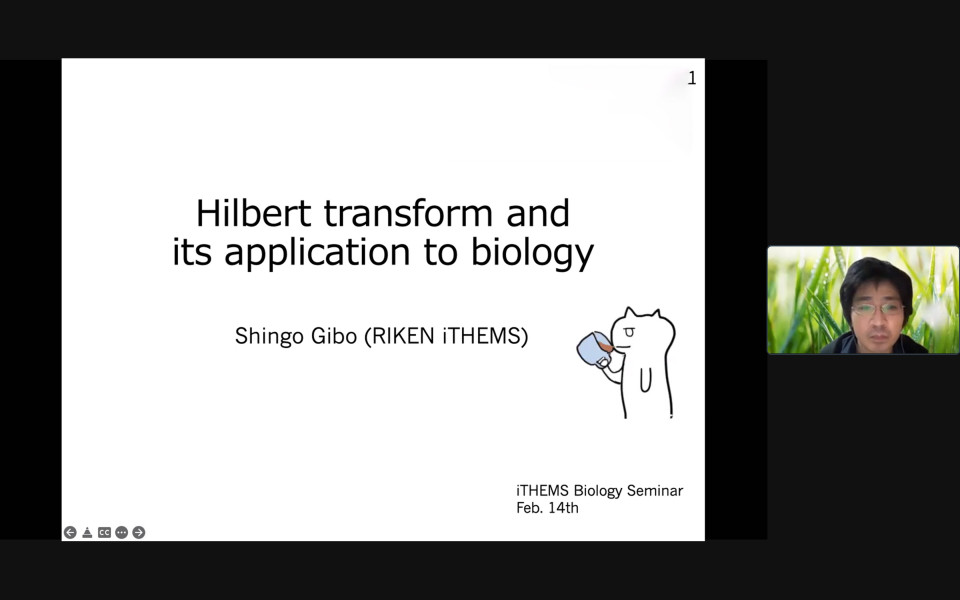

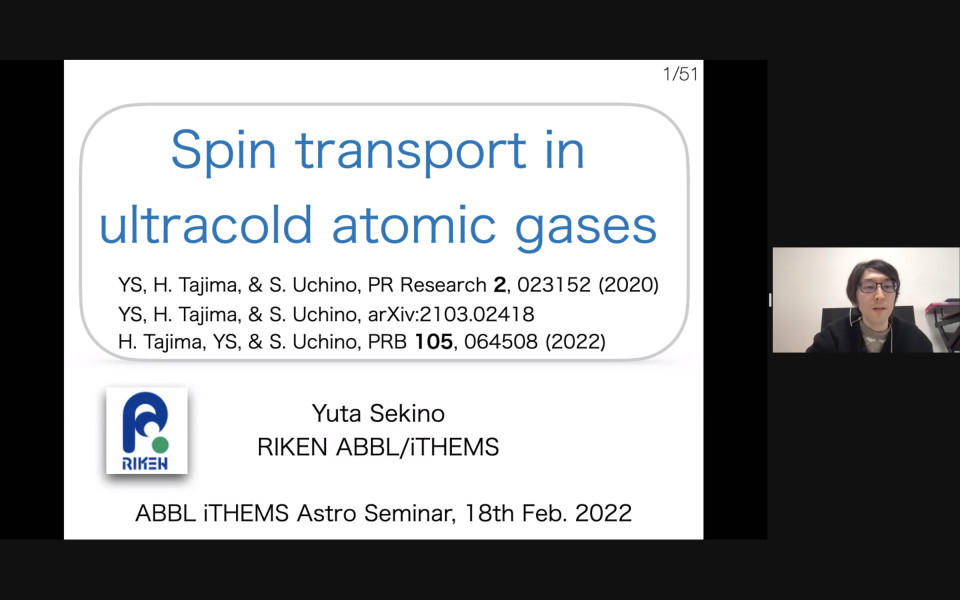

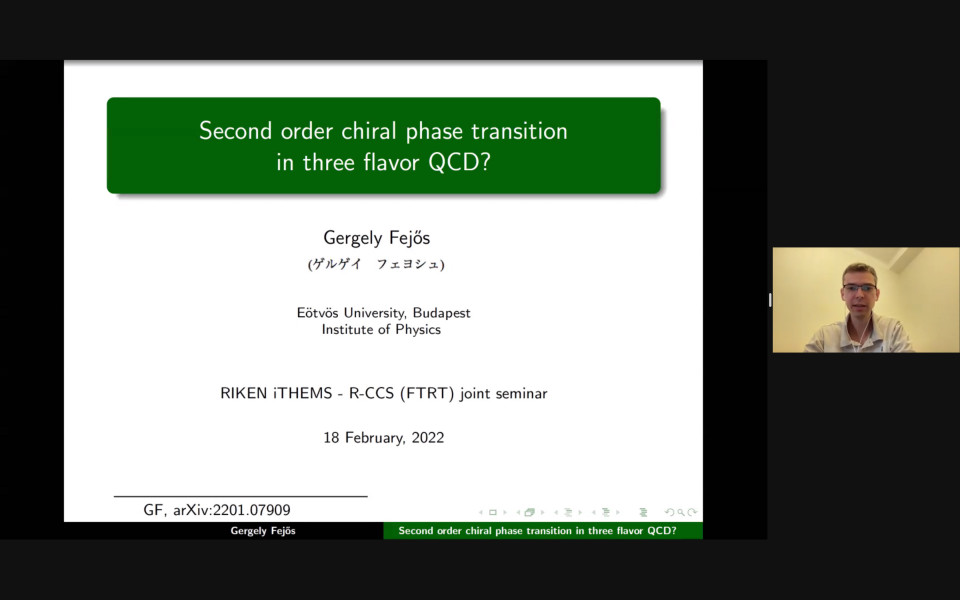
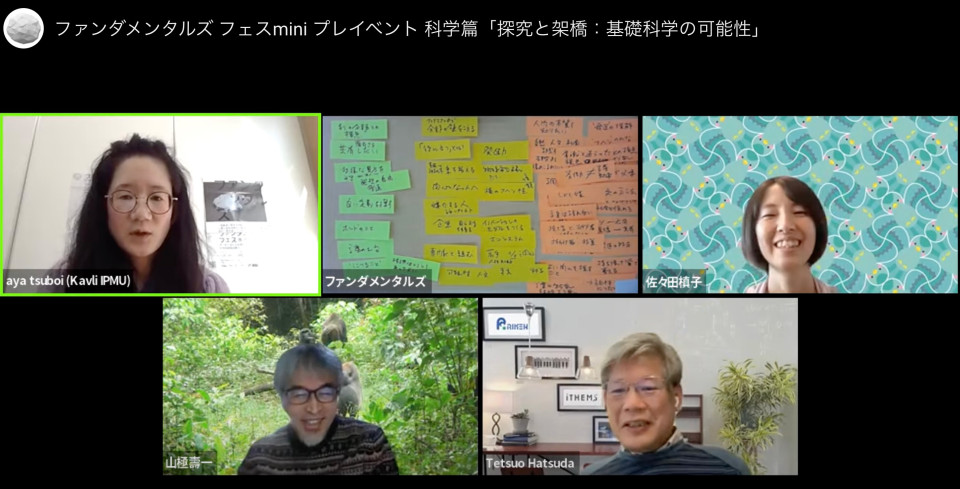
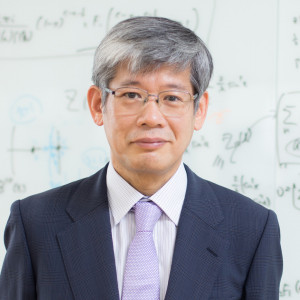


![[Shigefumi Mori and Takashi Sakajo Special Talk] How is mathematics utilized in society? - Exploring the Essence of Mathematical Research image](https://ithems.riken.jp/storage/app/uploads/public/622/19d/43c/thumb_2253_960_540_0_0_auto.jpg)